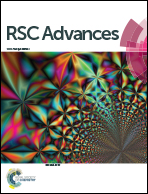Isothermal melt crystallization kinetics, melting behavior, and spherulitic morphology of novel biobased poly(hexylene oxalate)
Abstract
The isothermal melt crystallization kinetics, melting behavior, and spherulitic morphology of poly(hexylene oxalate) (PHO), a novel semicrystalline polyester derived from biobased resources, were investigated in detail with differential scanning calorimetry and polarizing optical microscopy in a wide crystallization temperature (Tc) range. The isothermal melt crystallization kinetics of PHO was well described by the Avrami equation in the investigated Tc range. With increasing Tc, the crystallization rate of PHO was reduced; however, the crystallization mechanism remained unchanged. Double melting endotherms were observed for PHO, which was explained by the melting, recrystallization, and remelting mechanism. Through the Hoffman–Weeks equation, the equilibrium melting point of PHO was determined to be 86.6 °C. Depending on Tc, PHO exhibited different spherulitic morphologies. Banded spherulites were observed in a wide range of Tc; moreover, the band spacing increased with increasing Tc. The spherulitic growth rates of the PHO spherulites decreased with increasing Tc; furthermore, the PHO spherulites exhibited a crystallization regime transition from regime II to regime III at about 50 °C, according to the secondary nucleation theory.


 Please wait while we load your content...
Please wait while we load your content...